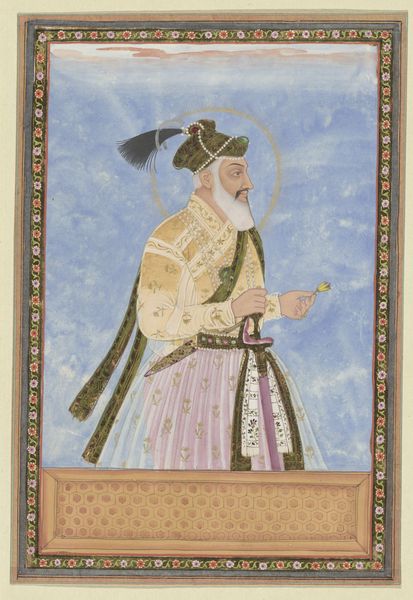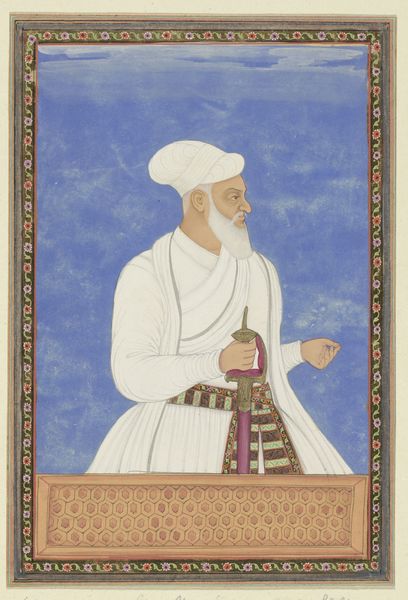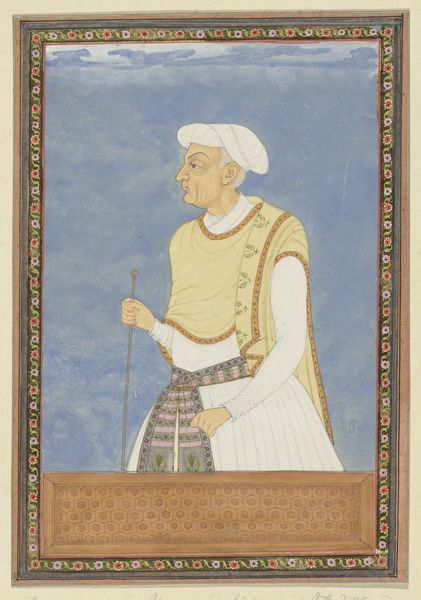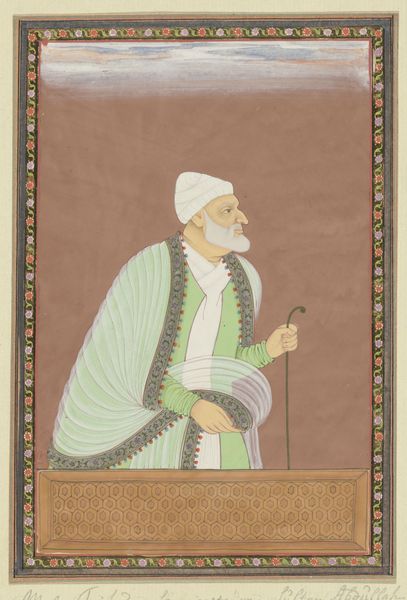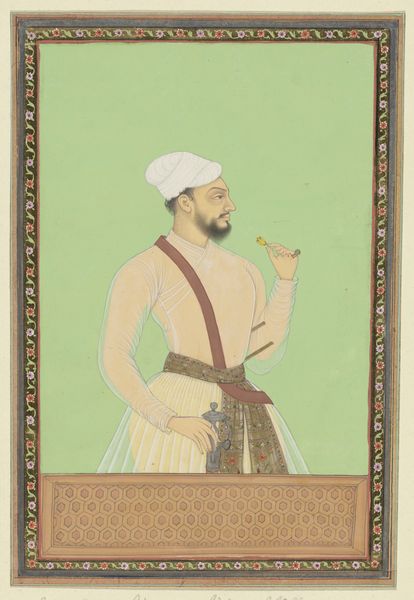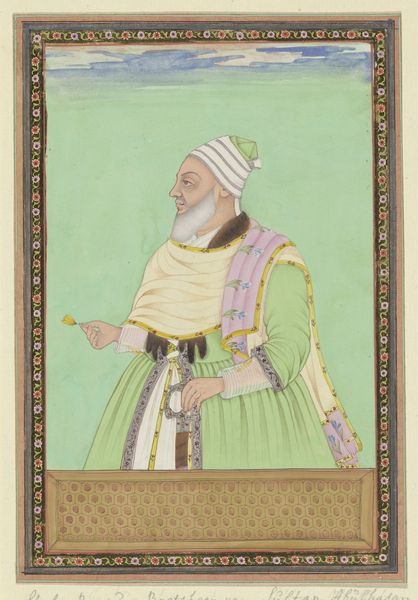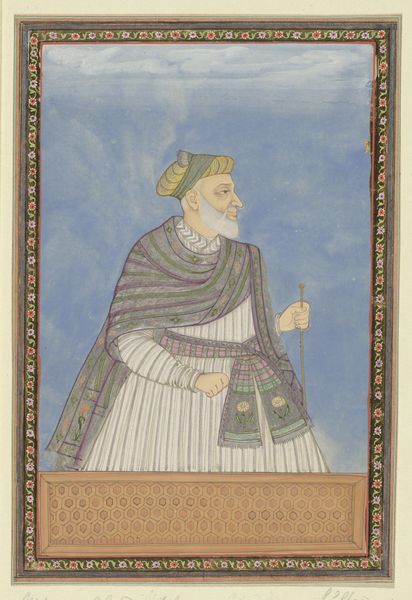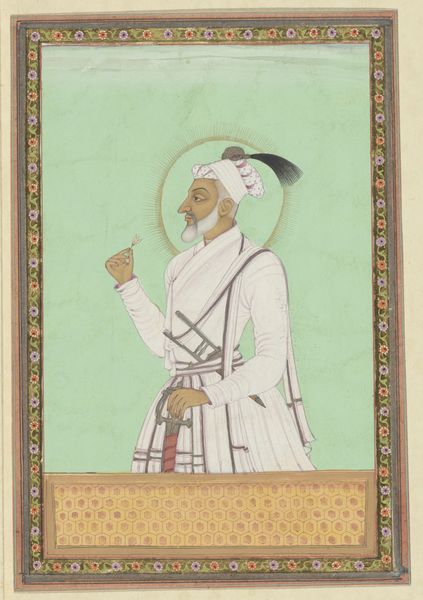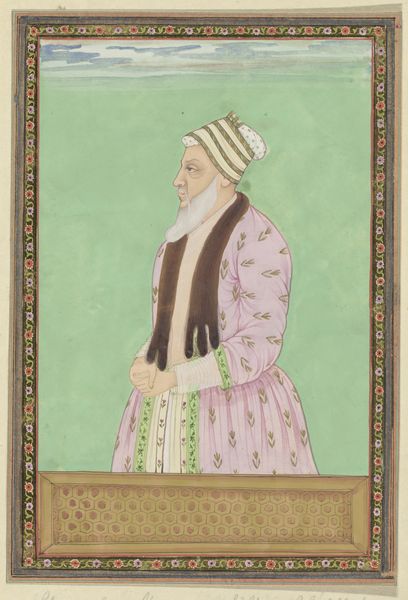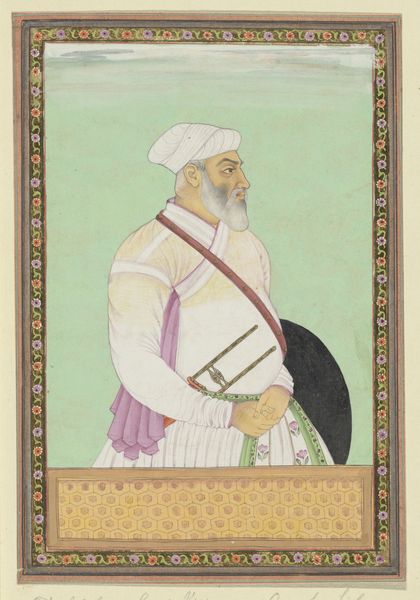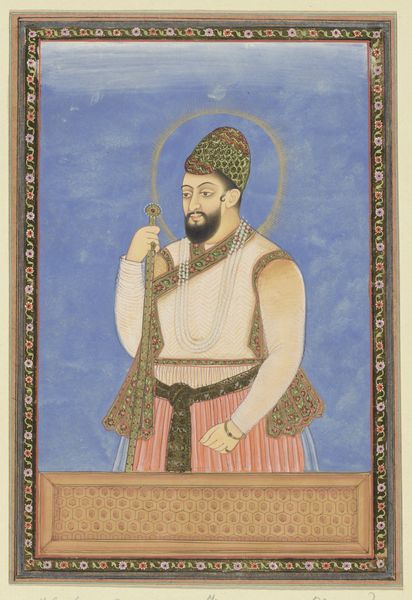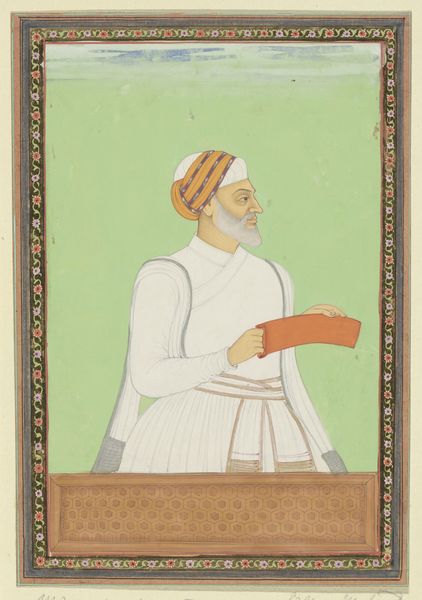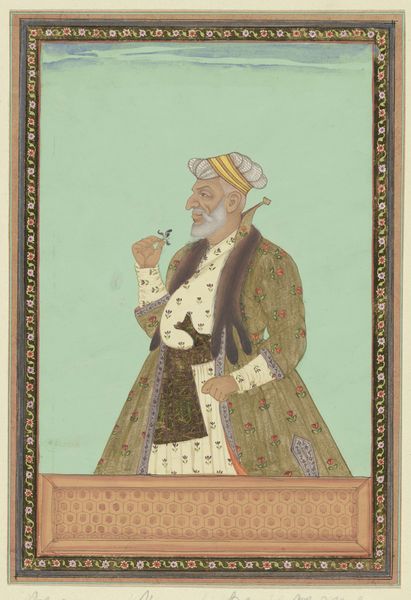
Portret van Mulla Abd al-Samad, die secretaris (dabir) van Sultan Abdullah is geweest c. 1686
0:00
0:00
anonymous
Rijksmuseum
painting, watercolor
#
portrait
#
painting
#
caricature
#
watercolor
#
orientalism
#
islamic-art
#
miniature
#
watercolor
Dimensions: height 203 mm, width 140 mm
Copyright: Rijks Museum: Open Domain
Editor: Here we have a watercolor painting from around 1686 titled, "Portrait of Mulla Abd al-Samad, who was secretary (dabir) of Sultan Abdullah." The piece is unsigned and is currently held in the Rijksmuseum collection. What I find striking is the figure's slightly detached, almost melancholic air, especially given his formal attire. How might the historical context inform this portrayal? Curator: That melancholy, as you call it, is a fascinating starting point. Consider that these portraits, often miniatures, served crucial functions within the socio-political structures of the time. Who was being represented, and for what purpose? Editor: Right, it's not just about capturing a likeness. Curator: Precisely. This painting comes from a time of shifting power dynamics and increased interactions between the East and West. Notice how the meticulous detail—the intricate patterns on his sash, the delicate flower he holds—speaks to a courtly aesthetic, a carefully constructed image of power and refinement intended for a specific audience. Editor: So, it's about projecting an image of power. Do you think there's anything subversive here? Is this really about that figure, or what is the patron and artist is trying to represent about that place in time? Curator: That's an excellent question! The caricature aspect adds a layer of complexity, right? Is this portrait an honest depiction, or is there an element of satire or commentary woven in? These elements remind us that art is never neutral; it always operates within, and often reflects, the power structures of its time. We should reflect also about what museums do to an artwork to communicate certain values. Editor: It’s almost like reading between the lines of history itself. It completely reframes how I view these works. Curator: Exactly! By exploring the historical and cultural forces at play, we move beyond a simple appreciation of aesthetics and begin to understand the intricate dialogue between art and society. I hadn't quite looked at it this way myself until we just had this discussion, I had missed the satrical side of the image. Editor: It makes you think differently. Thank you!
Comments
No comments
Be the first to comment and join the conversation on the ultimate creative platform.
